Introduction
- Oral hygiene in young children is concerning.
- One in three children has cavities at 3 years old, and one in two has them at 5.
- Parents often use non-prescription drugs without consulting doctors.
- Overuse or misuse of antibiotics and analgesics may lead to adverse outcomes.
Dentists cannot do much to address the issues of child dental health unless the child is introduced to them early in its life. However, parents often refuse to trust doctors or misjudge the severity of the issues and resort to self-medication. Overuse of drugs may lead to antibiotic resistance, indigestion, and diarrhea for antibiotics and headaches, weakness, and nausea for analgesics.
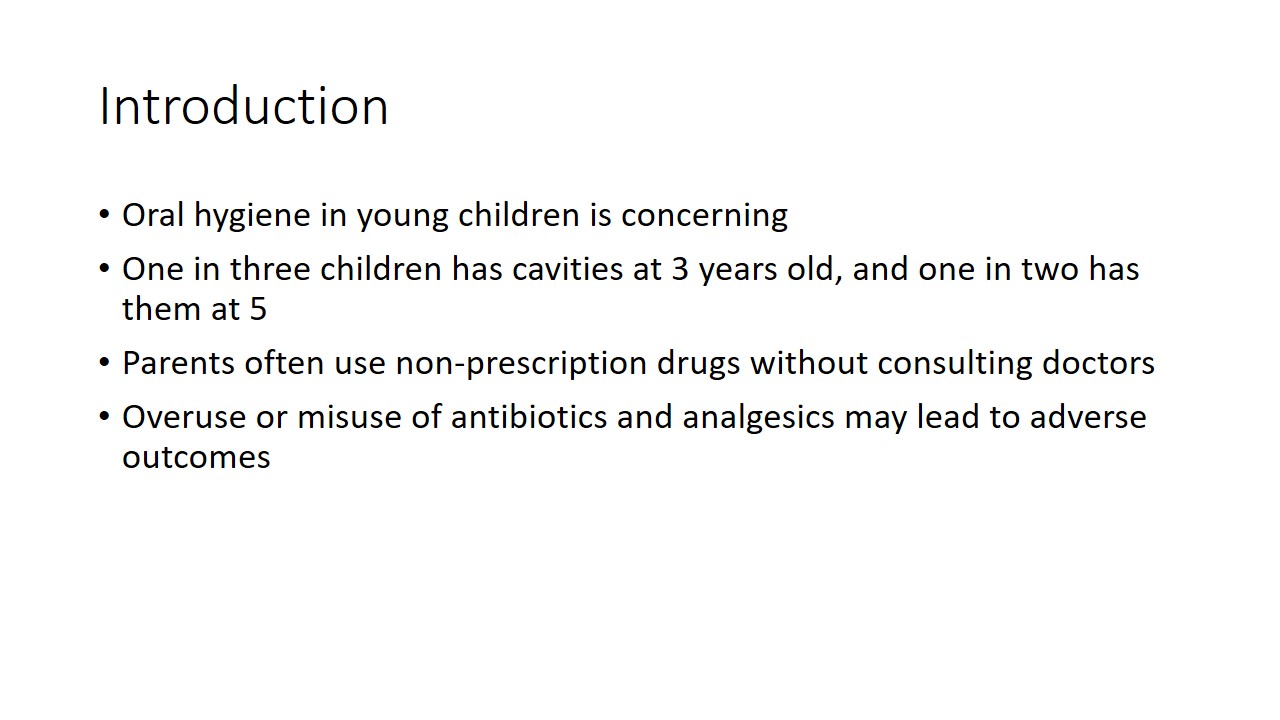
Literature Review
- Garofalo et al. (2015) conclude that 69.2% or more of Italian households participate in self-medication, with 53.4% doing so at least once a year.
- Medical services were considered unnecessary or too expensive.
- Dar-Odeh et al. (2018) state that 59.3% of females in their study reported that they participated in self-medication.
- Unwillingness to visit a dentist, limited access to services, lack of medical insurance, and inappropriate pharmacist behaviors were cited as reasons.
- Nayyar and Tavargeri (2018) note that 61% of parents have medicated their children without consulting medical specialists.
- Socioeconomic class was directly correlated with the incidence of self-medication practices.
- Gohar et al. (2017) claim that 77.25% of their study participants medicated their children, with 66% doing so while the children were aged 1-5.
- 45% of participants have done so 3-4 times per year, primarily due to lacking knowledge, money, or specialist access and the minor character of the issues.
- Shehnaz et al. (2014) note that overall, approximately 70% of parents medicate their children 3-4 times a year for a variety of reasons.
- They also describe practices such as the use of old prescriptions to obtain restricted medications.
- KomalRaj et al. (2015) note that 100% of their study participants employed self-medication and 60% reported to medical drugs to do so.
- Many people practice alternative medicine, sometimes in conjunction with pharmaceutical drugs.
People from disadvantaged backgrounds were more likely to medicate their children, usually with antibiotics and analgesics due to their ability to alleviate pain.
KomalRaj et al. (2015) propose measures such as education about the dangers of self-medication and improved pharmacy control to avoid a deterioration of the situation.
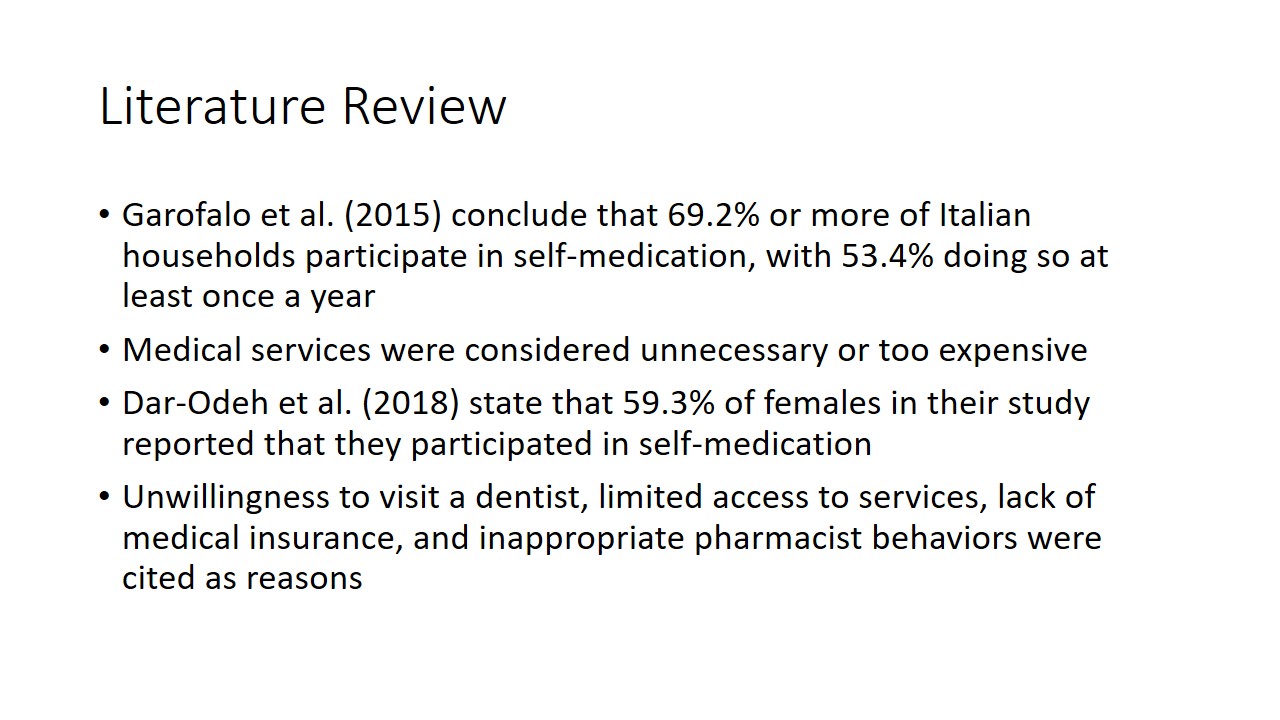
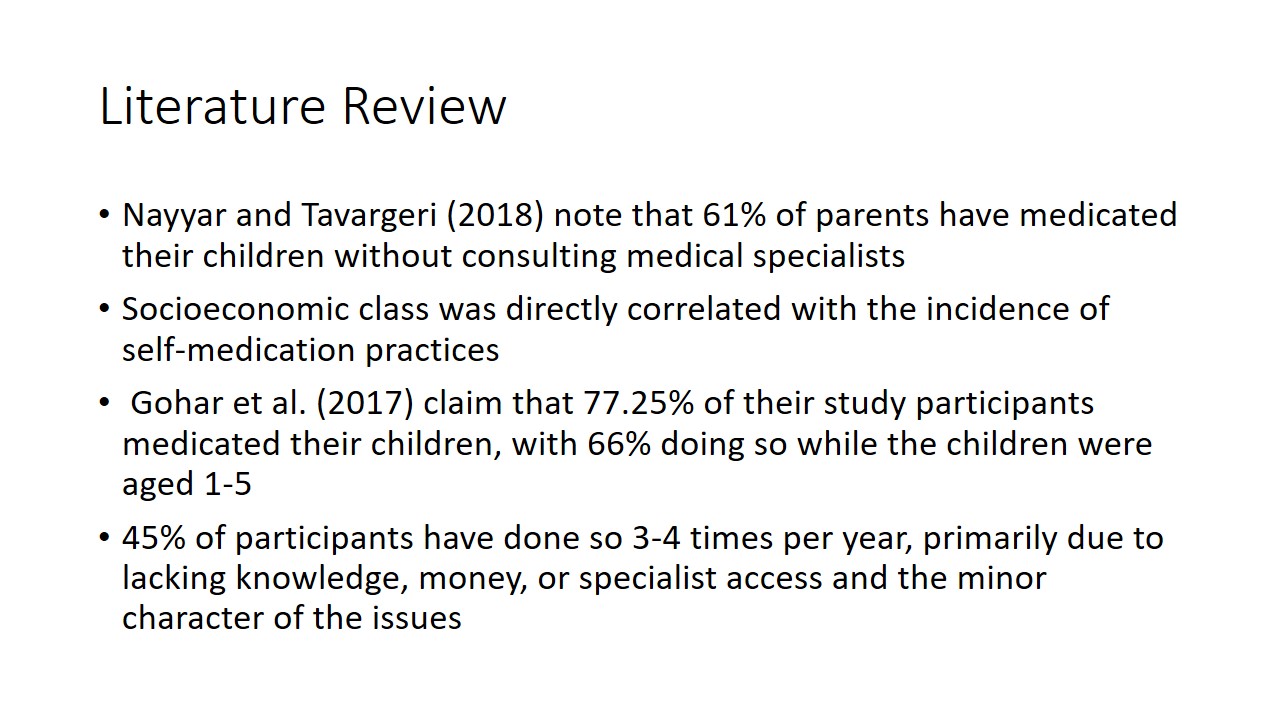
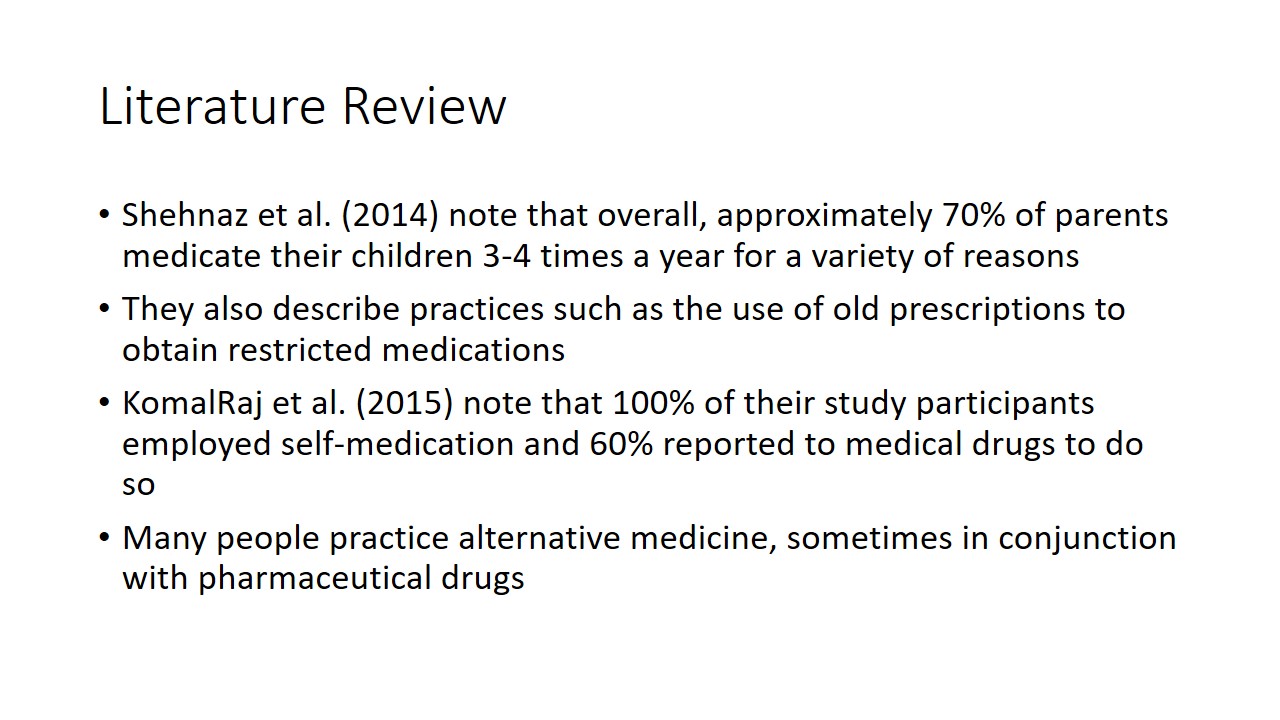
Results
- 87.5% of parents, 76.5% of whom were mothers, used medication without consultation.
- 83.1% of parents described the pain as the primary reason why they self-medicate.
A majority of parents, at 50.5%, did not have dental insurance for themselves or their children.
- A significant majority of parents, at 59.7%, prefer using analgesics to antibiotics.
- Most people obtain the medications they use for self-treatment from pharmacists.
Most parents take a variety of safety precautions before medicine application. 68.3% are worried about overdoses, 76% check the expiration date, 60.3% use teaspoons to measure the drug, 66% read the prescriptions, 58.6% check prescriptions for children, and 88.9% follow the suggested dosages. 64.3% learn the information required for self-medication from friends and family, 58% are informed by pharmacists, but only 14% trust strangers in this regard. 62% use old prescriptions, 84.3% follow advertisements, and most use leftover medicines from other treatments. 55.7% note that pain relief is a reason to self-medicate and 79.7% disbelieve that there will be any side effects. 60.9% cite high drug cost as a disincentive to visit dentists, 66.3% consider the visit prices too high, 59.7% note the long queues, 77.4% have issues accessing a dentist, 65.7% do not have the time, 72.3% have had negative prior experiences, and 78.3% believe that milk teeth do not require in-depth treatment.

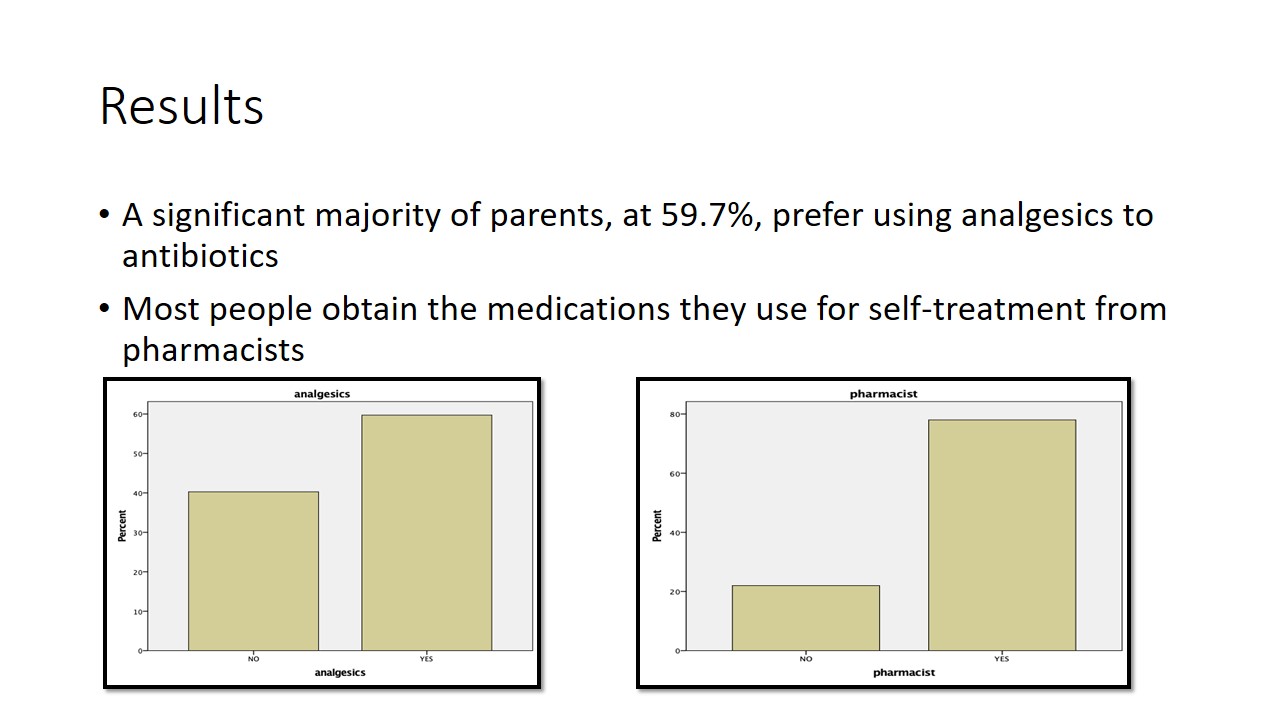
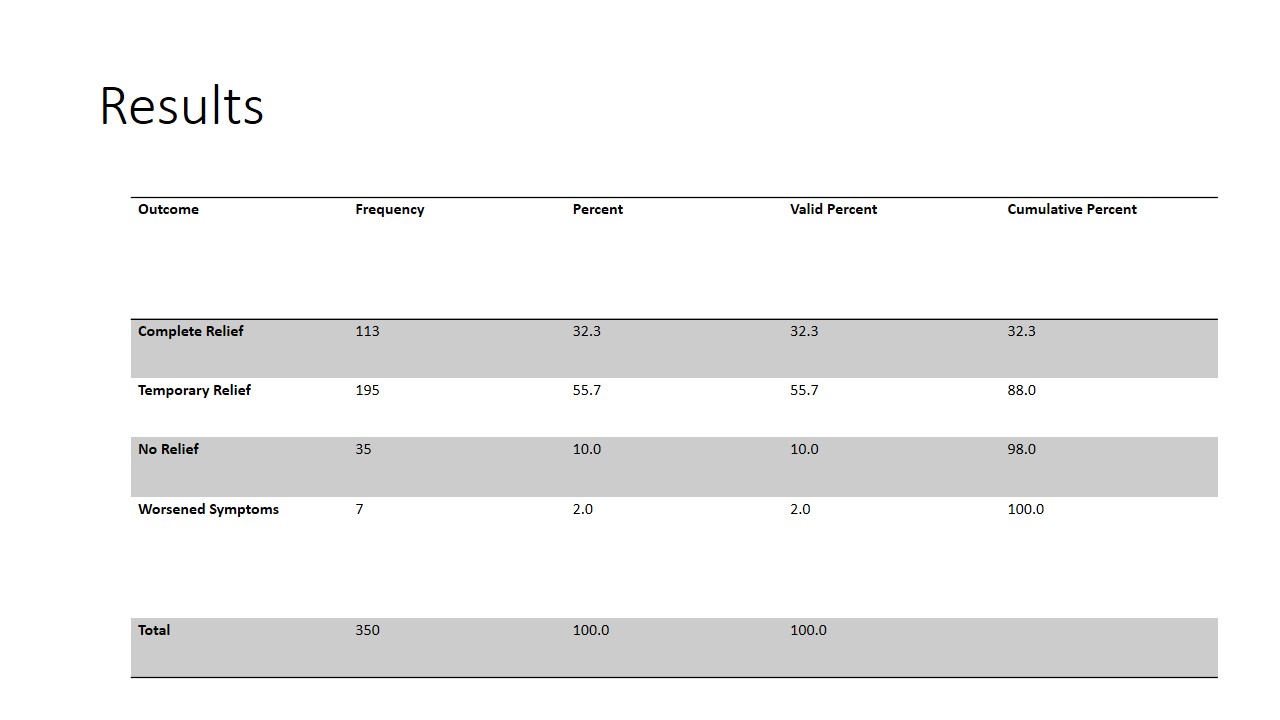
Discussion
- Most families are not covered by dental insurance, making dentist visits costly.
- Most parents obtain the drugs they use for self-medication from pharmacists.
- People mostly react to external symptoms, such as pain, for issue identification.
- Friends, family, and pharmacists are the primary sources of medical information that leads people to self-medicate.

Conclusion
- Most parents turn to self-medication to address their dental issues and those of their children.
- Costs are the primary driving factor behind the choice, as most of them do not have dental insurance.
- The parents are aware of some of the dangers of self-medication, but not of all of them.
- Further research is necessary to identify potential solutions to the issue.
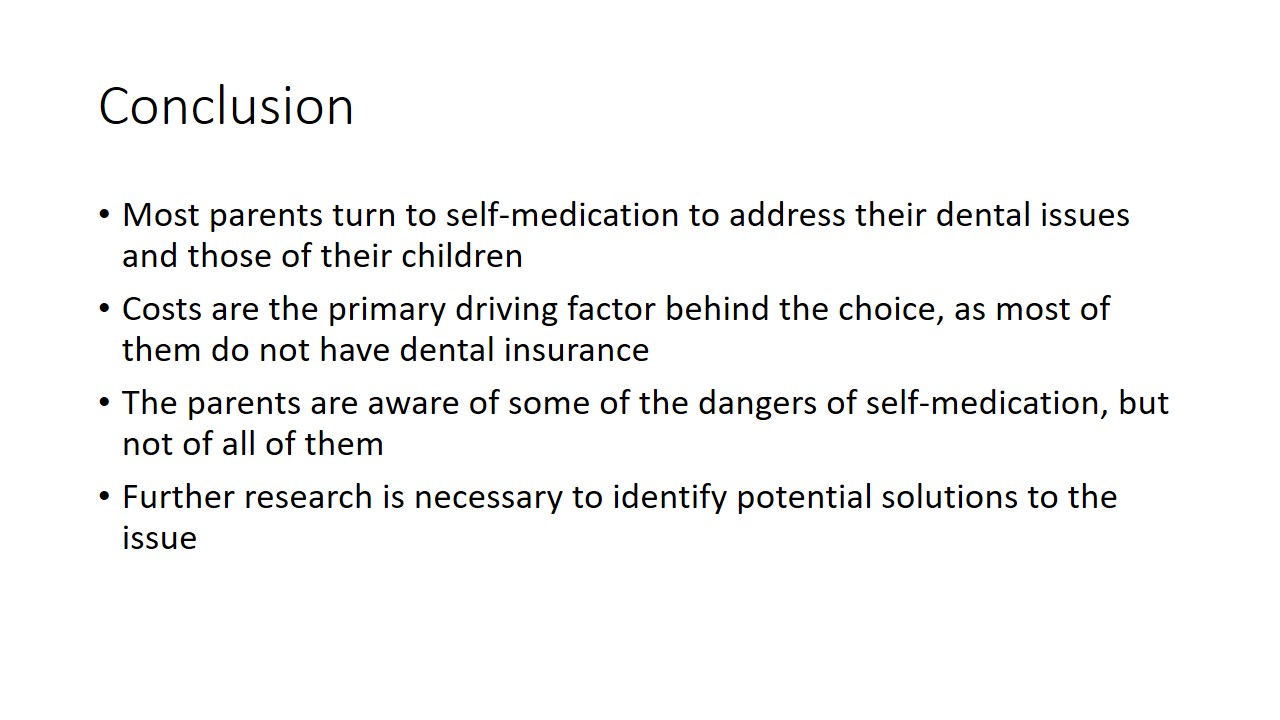
References
Dar-Odeh, S, Othman, B, Bahabri, R, Alnazzawi, A, Borzangy, S, Fadel, H, Alolayan, A & Abu-Hammad, O 2018, ‘Antibiotic self-medication for oral conditions: characteristics and associated factors’, PesquisaBrasileiraemOdontopediatriaeClinicaIntegrada, vol. 18, no. 1, pp. 1-10.
Garofalo, L, Giuseppe, G & Angelillo, I 2015, ‘Self-medication practices among parents in Italy’, BioMed Research International, vol. 2015, pp. 1-8.
Gohar, U, Khubaib, S & Mehmood, A 2017, ‘Self-medication trends in children by their parents’, Journal of Developing Drugs, vol. 6, no. 2, pp. 1-7.
KomalRaj, MR, Padma, KB & Aruna, CN 2015 ‘Self-medication practices for oral health problems among dental patients in Bangalore: a cross-sectional study’, IOSR Journal of Pharmacy, vol. 5, no. 10, pp. 68-75.
Nayyar, A, & Tavargeri, A 2018 ‘Self-medication practices by parents in children for dental conditions’, International Journal of Current Research, vol. 10, no. 2, pp. 65684-65688.
Shehnaz, S, Agarwal, A & Khan, N 2014 ‘A systematic review of self-medication practices among adolescents’, Journal of Adolescent Health, vol. 55, no. 4, pp. 467-483.